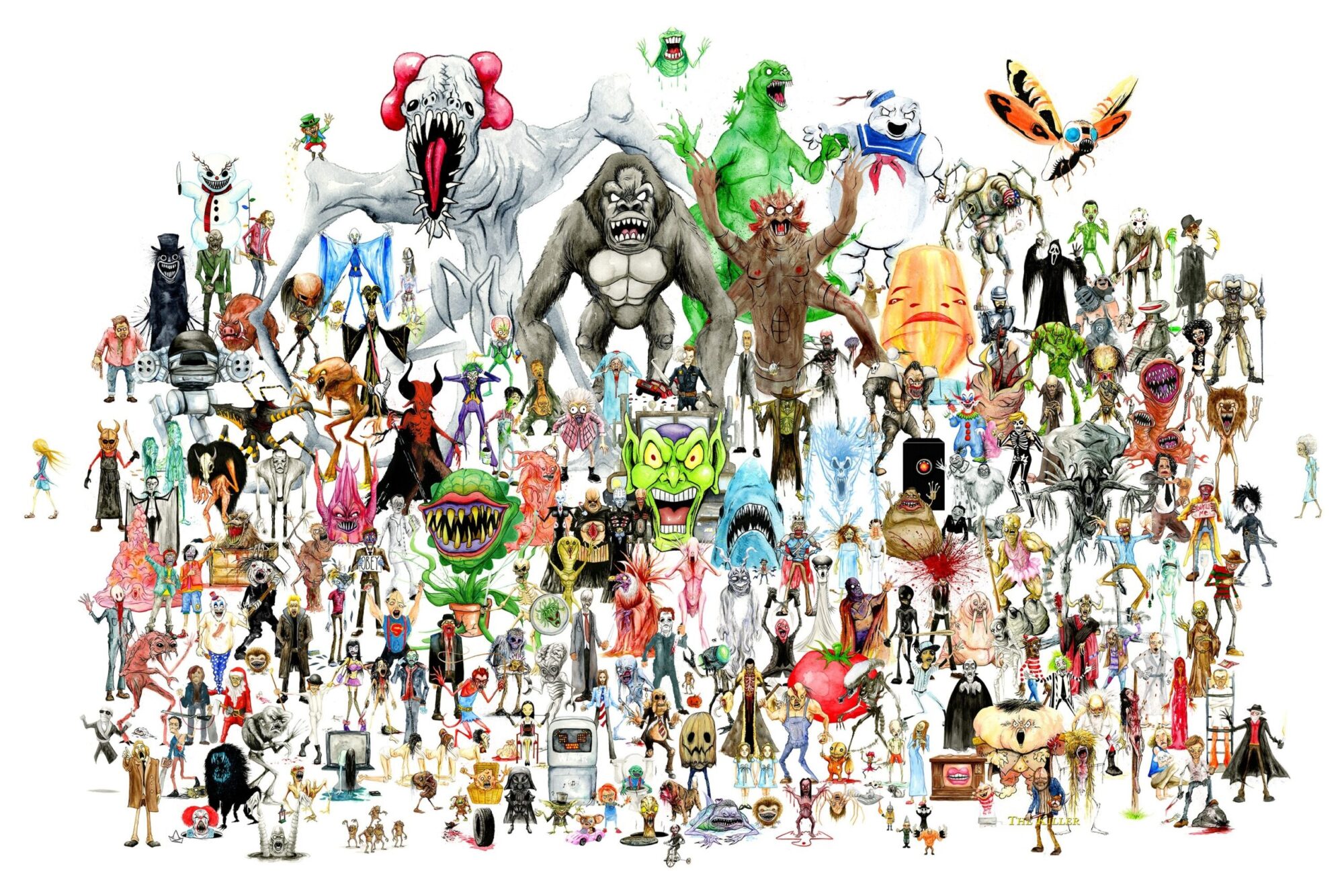Hic sunt dracones. “Here be dragons.” Here be monsters. This was the statement written on ancient maps at the borders of the known world, beyond which lay the vast, and often fearsome, unknown.
 [A monster threatens to devour a ship in The Arrival of the Englishmen in Virginia (1958) by Theodor de Bry.]
[A monster threatens to devour a ship in The Arrival of the Englishmen in Virginia (1958) by Theodor de Bry.]
Even now, despite great advances in cartography, there still be a host of monsters that loom in our collective imaginations, leering at us from cinema screens and television sets, from the glowing monitors of our personal computers, from the pages of novels and magazines, from the front pages of newspapers and a myriad of other media. These monsters and monstrous figures include what might be considered ‘classic’ – vampires, werewolves, zombies, aliens, and so forth – but are by no means limited to such literal monsters from bygone times. Indeed, it seems as if anything and anyone can be ‘monsterized’ or described in monstrous terms: political orientation, sexual orientation, religion, gender, art, foreigners, and so on and so on and so on. Now we must ask: what isn’t monsterized?
Hence, monsters and the monstrous have not only long existed but continue to thrive in the collective imagination and public discourse of every known human culture – each incarnation peculiarly unique and yet all eerily similar. But why? Why do they exist? To terrify us? To titillate us? Or to teach us? Where do they come from? What, if anything at all, do monsters represent? In short: Why, in these contemporary times, must there still “be monsters”? These are some of the questions we will explore in this course of monstrous content.
In our Course Syllabus, you will find the goals and expectation of of our course, descriptions of essay assignments, and the due dates for homework and drafts.


